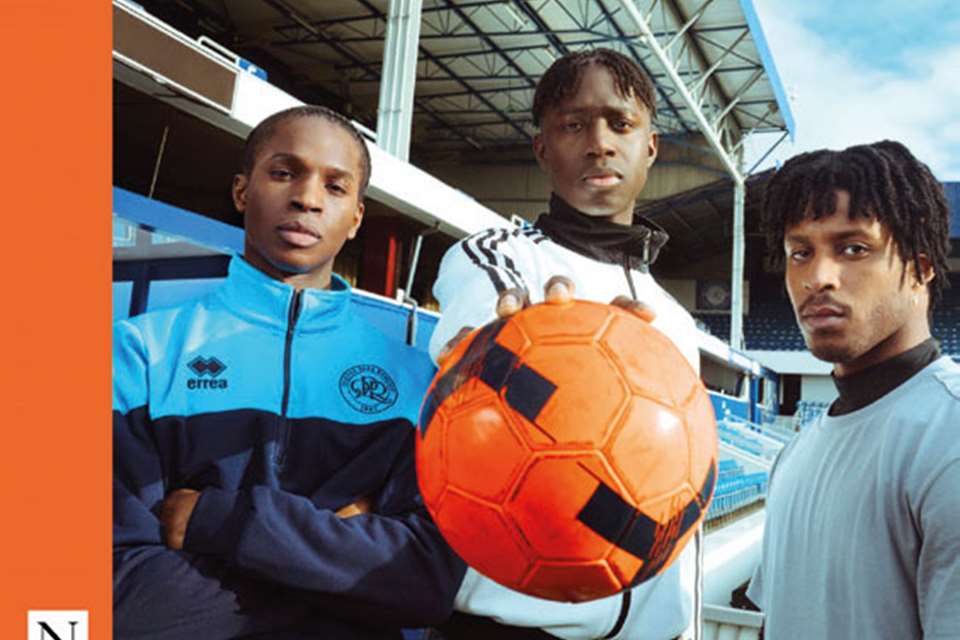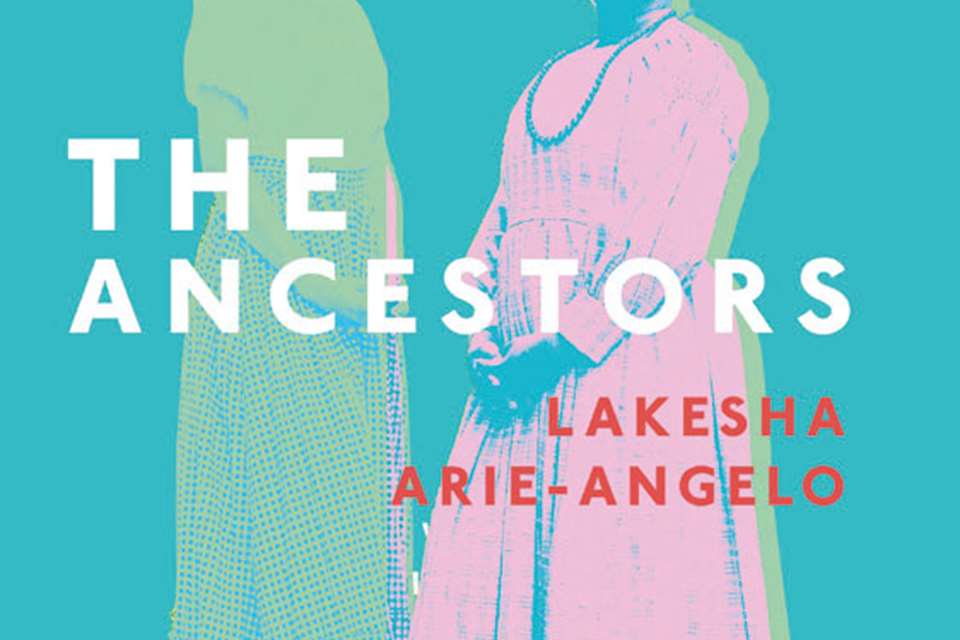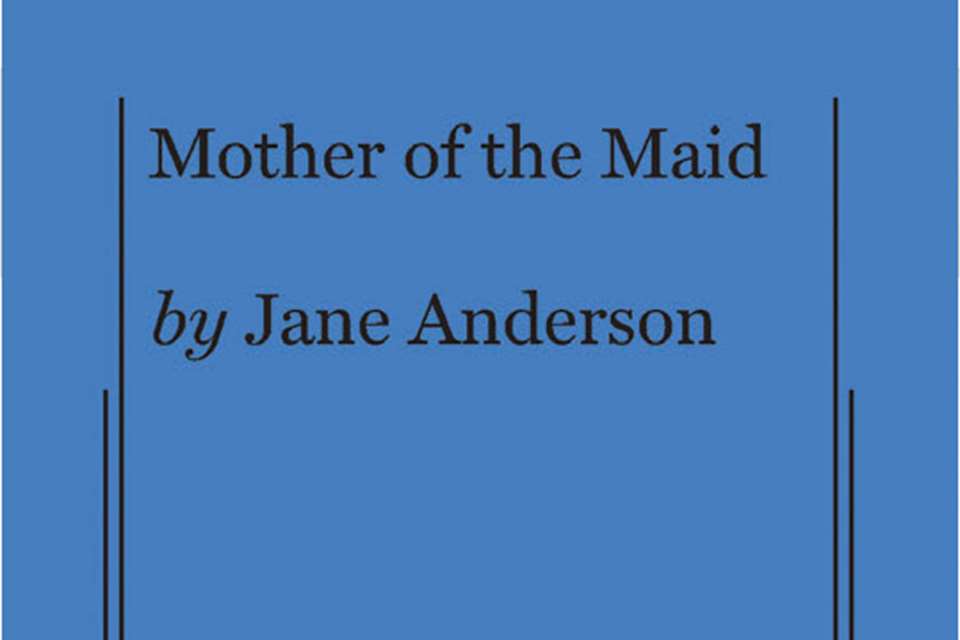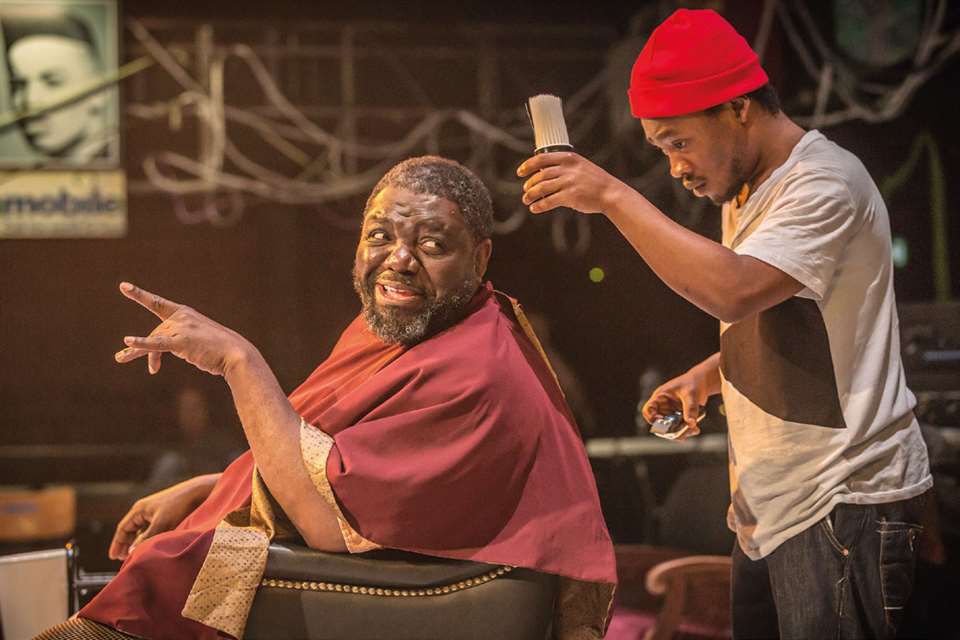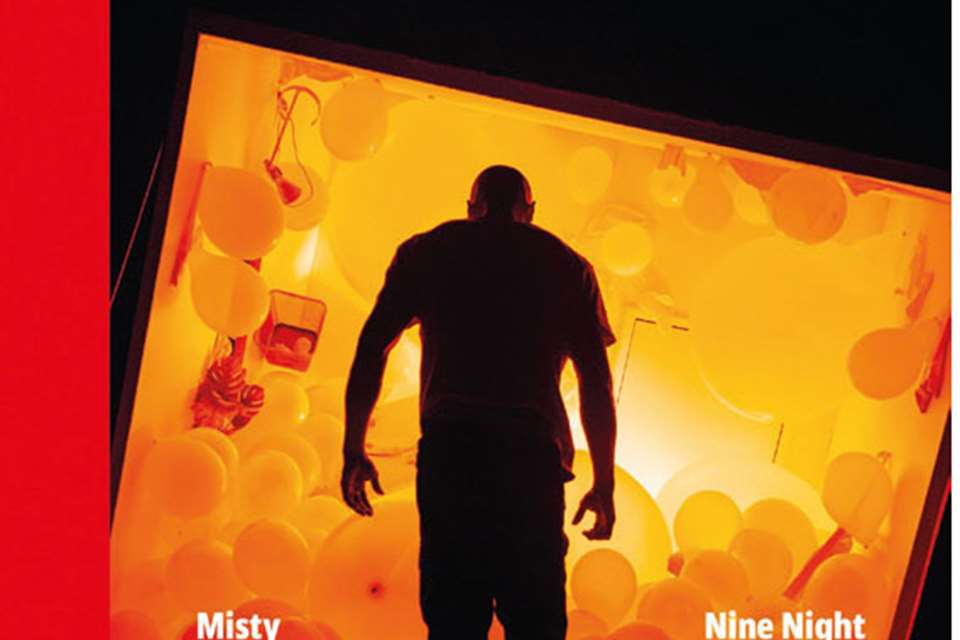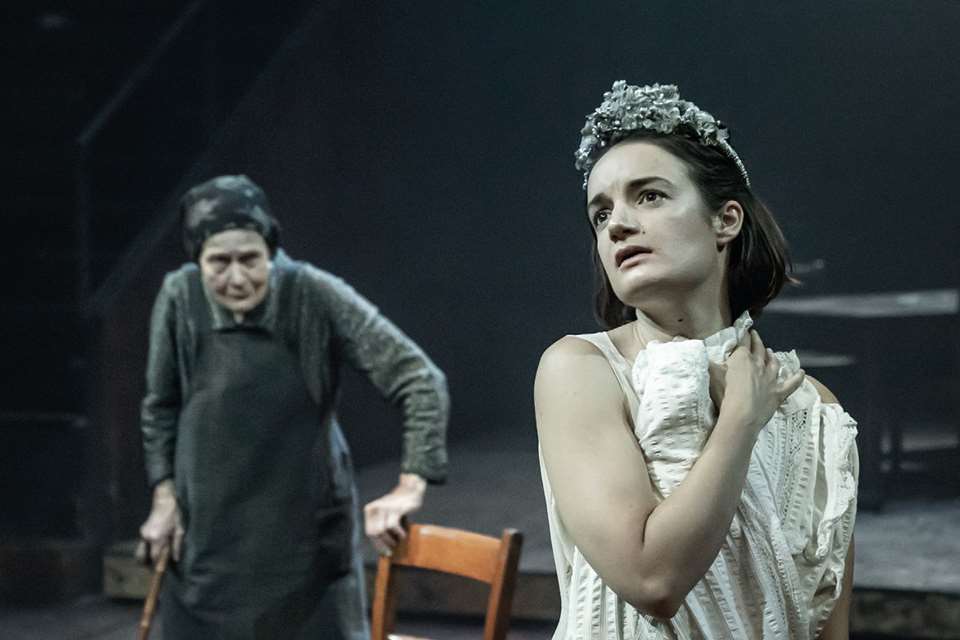Tuesday by Alison Carr
Georgia Douglas-Brown
Sunday, May 1, 2022
Each issue of D&T we bring you a page-to-stage focus on a play for performing with your students. Here, Georgia Douglas-Brown explains how she staged Alison Carr's Tuesday for NT Connections.
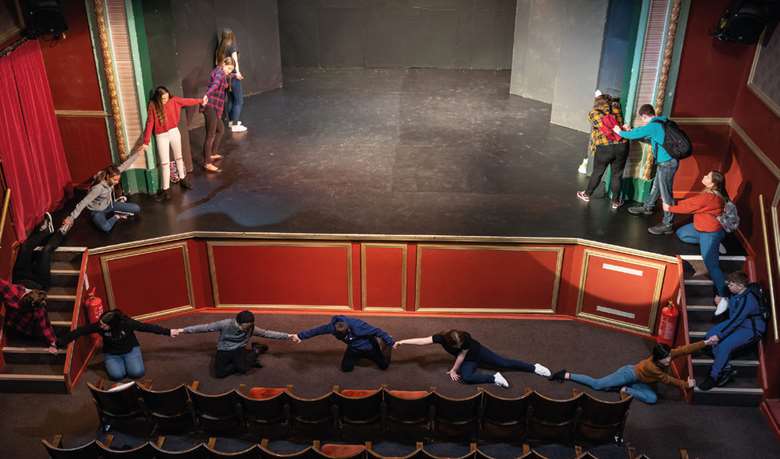
Chris Lewis Photography
The National Theatre's Connections project is an interesting and exciting process. When selected, the youth theatre company is given a choice of 10 plays written for young people and never before performed, and is asked to select their top two plays which they'd like to perform. Now, in the interests of full disclosure, Tuesday was my second choice!
Plot
The play's plot leads to some interesting design challenges: It's a seemingly normal Tuesday at Lane End School when, out of nowhere, a giant tear forms in the sky. Out of the tear falls doppelgangers of some students, with some minor changes to their lives as their ‘what ifs’ are answered. The students must work together in order to return the doppelgangers to their alternate universe, before they become too sick. A human chain supports the young people to fix the tear and send their doppelgangers home again.
Meeting Alison Carr, the playwright, was a particular personal highlight. She was the loveliest woman and was able to offer an insight into how she'd envisioned certain aspects of the play would look. Carr was very keen on leaving the staging open to interpretation and was interested to see how we'd bring her writing to life. I was quite concerned with how we'd manage some of the logistics of the play. We now had a tear in the sky, doppelgangers and alternate universes to contend with!
Performance trumps design
As part of the Connections process, we were partnered with a professional theatre and would perform there after our home performances. This was a major consideration when designing the set, as the play would have to be performed in two separate venues; our space was a proscenium arch theatre with a black backdrop. This meant we used a lot of physical theatre to keep the play fluid and the audience engaged. One of the ways we tackled this was by splitting scenes up. Some of the storytelling was directed straight to the audience, breaking the fourth wall, and some was acted out.
While storytelling, the lines were distributed evenly between the cast. The actors would move just before their line, and deliver their line at the front of the stage, before reconfiguring in another formation. This was to keep the audience's attention and lose some static, which can be quite common when directing a play with no set. When the play was becoming more intense, our actors would move to the front of the stage one at a time, creating a wall of actors right in front of the audience. This created a threatening atmosphere, as the actors blocked the audience's view.
Physical theatre
When creating the tear in the sky, I wanted a way to physically represent this. With the young people we explored ways in which the sky might move in this situation – for example pulsating, whirling, crashing – and how we could embody these words with a movement. We spent a lot of time exploring different movements, and how these could build up to a climax, and I let the young people lead this.
I then ‘borrowed’ some of the young people's movements to create a sequence. To put this into context, we delved into the term ‘pulsating’, and the young people decided that a way to embody this is was if, as a group, they stood in a circle and moved in and out in unison. We paired the choreographed sequence with music in which the tempo quickened and built up in a crescendo, echoing the movements. For the actual tear, the actors stopped holding hands and moving as one and split across the stage into ‘us’ and ‘them’. This signalled the change between former unison and now alienation.
A human chain
Another difficult staging element was the human chain. We wanted to create an interesting dynamic so that when the audience looked, no actor was doing the same thing! We also wanted to make the most of the space the theatre offered us. I decided to loop the human chain down the stairs stage left, along the front row of the auditorium (just far enough away from the actual audience) and back up the stairs onto stage right. This created a tableau different to any created in earlier scenes. I also challenged each actor to make sure at least one body part was touching the actors either side of them. However, all actors were given a different body part! This meant the actors had to be creative and worked at different height levels, drawing more attention to the chain. We also made the most of the proscenium arch by having the actor at either end of the chain holding on to the arch, which made the space feel as though it was for-purpose and cohesive with the play, even enabling it to become part of the set.
So, to summarise, I think when directing Tuesday it is important to really lean into it. Letting the actors explore physical theatre and different ways they could use their bodies to explore and convey the story is a key part of this production. Tuesday enabled us to try things we hadn't explored as a group before, as well as learning so much about the characters and their backstories.
Read a review of Tuesday here.


